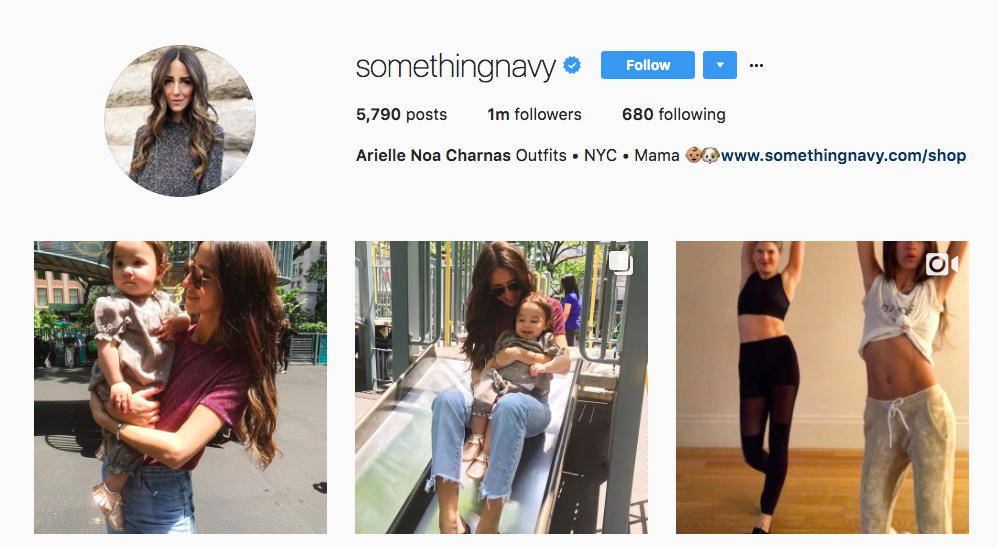More and more brands and marketers are putting influencer marketing strategies into place. Brands and marketers are also spending a lot more on influencer marketing than ever before. The 2017 State of the Creator Economy study (SOCE) revealed that more than half of marketers had past-year experience with influencer marketing. But how many of them had a successful influencer marketing strategy?
- About two-thirds of the marketers at companies that did influencer marketing had a separate budget for the practice last year.
- A full third of those companies had budgets over half a million dollars. That’s a jump from just a quarter of companies the year before.
It’s not enough to just “do” influencer marketing. To get it right your brand needs a successful influencer marketing strategy in place. A strategy is what will help you put together a campaign that actually does what you want it to do. Here’s how you can craft a successful influencer marketing strategy, and make sure it’s executed the right way.
What Is a Successful Influencer Marketing Strategy?
Harvard Business Review offers a good general-purpose definition of a strategy. According to HBR, a business strategy is:
A set of guiding principles that, when communicated and adopted in the organization, generates a desired pattern of decision making. A strategy is therefore about how people throughout the organization should make decisions and allocate resources in order accomplish key objectives.
Lots of preplanning goes into a successful influencer marketing strategy. Before you do anything, you need to think of what your objectives or goals are. What do you want your campaign to accomplish? You want to have a concrete, measurable goal for the end of the campaign. An example might be “add 1,000 email subscribers” or “increase sales by 10 percent.”
Another key component of a successful influencer marketing strategy is understanding who your audience is. That means knowing where they hang out, what they care about, and what they want from your brand. It also helps to understand what influences your audience’s behavior — what makes them buy a product, or at least click through to check out a website?
The last essential component of an effective influencer marketing strategy is key performance indicators (Influencer Marketing KPIs). You use KPIs to measure or gauge the results of your campaign. They can include things like number of visitors, number of new subscriptions, and number of social shares. Choose your campaign’s KPIs based on your goals.
Now that you know your goals, your audience, and your Influencer Marketing KPIs, you can focus on how you’ll achieve your objectives or goals and reach your target audience. That’s the heart of a successful influencer marketing strategy. You want to identify the influencers who will help you best reach those goals, and the types of content they’ll produce that will help you achieve your objectives.
How Do Marketers Organize Their Teams?
Marketers have several options when it comes to finding influencers. One is to search for influencers on Google or through social media. That can often be a long, arduous process, as not everyone on social media wants to be an influencer. Many people who seem like a good fit might have too much on their plate already, or be working with a competitor.
Another option is to use an influencer marketplace to find influencers. Influencers who are looking for opportunities sign up for marketplaces create profiles that reveal their social media stats, interests, and other pertinent details. Using a marketplace lets a marketer see who’s available and what their social media presence and influence is like. It takes a lot of the guesswork and trial and error out of finding a team.
How Goals Shape Successful Influencer Marketing Strategies
How your brand puts together an influencer marketing strategy depends in large part on what your brand’s goal for the campaign is. Often, influencer marketing strategies are shaped by the following objectives:
Target and connect with a specific audience.
If your goal is to reach out to a new, different audience, your strategy is likely to include working with influencers who already connect with that audience. The influencers can then use their position as a trustworthy source to introduce your brand to their followers.
Boost brand awareness.
Sometimes, the goal might be to let the world know that you exist. One popular way to do that is with a social media takeover. During a takeover, you let an established influencer (one with a bigger following than your brand has) post to your social media accounts for a period. The idea is that the influencer’s followers will hop over to your profile and follow it, so that they can see what their favorite influencer is up to.
Make customers love you more.
Your brand’s goal might be to increase loyalty among customers you already have. One way to do that is to use influencers to give customers exclusive deals or sneak peeks at what your company has in the pipeline.
Examples of Excellent Influencer Marketing Strategies
What does a great influencer marketing strategy look like in action? Here are a few examples.
Las Vegas Convention and Visitors Authority
The goal: Launch a Snapchat channel (and get followers).
The strategy: The Las Vegas Convention and Visitors Authority (LVCVA) had DJ Khaled, the so-called “King of Snapchat,” take over its new channel for a few days, giving viewers a tour of the city.
The result: The LVCVA’s Snapchat channel had more than 350,000 views during that first weekend alone.
Peter Thomas Roth
The goal: Boost product sales.
The strategy: The beauty brand partnered with Arielle Charnas, the blogger at Something Navy. Charnas has a reputation for boosting sales of beauty products by posting about them on her blog or Snapchat. She posted a Snapchat story about using a $52 Rose Stem Cell Bio-Repair Gel Mask.
The result: 24 hours after Charnas’ Snap, the brand had sold 502 masks, worth $17,565.
National Pork Board
The goal: Reach a new, specific audience.
The strategy: The National Pork Board connected with Latino chefs and social media influencers to target more Latino consumers. Although Latino consumers are already among the top consumers of pork, according to a Nielsen study, they didn’t typically respond to messaging from the National Pork Board. Influencers included chef Lorena Garcia, who created Latino-inspired recipes using pork, and chef Jose Mendin, who created the first pork burger for the 2017 Burger Bash. The board also created a hashtag, #SabrososMomentos.
The result: Three years later, the hashtag is still going strong, and plenty of people have used it to share their pork recipes.
Five Steps to a Successful Influencer Marketing Strategy
Here’s how you can put together your own successful influencer marketing strategy:
1) Know your goal.
Without a goal, there’s no point. Make sure yours is specific, measurable, achievable, relevant, and time-bound (aka “SMART”).
2) Know your audience.
Who are you trying to reach? Buyer personas will help you nail down the details of who your audience is, what they care about, what influences them, and what they want.
3) Choose the right influencers.
Influencers are the heart of your strategy. Pick ones based not only on their follower counts, but also their engagement levels and relevance to your audience and goal.
4) Customize and personalize your approach.
Influencers aren’t robots. They’ll be able to tell when you want to work with them specifically, and when you want to work with just any old influencer. Think of the influencer’s audience, typical style, and channels, and make sure they align with your brand’s.
5) Review and assess.
Once your campaign is out in the world, measure it to see if it’s actually helping you achieve your goals. This is where you KPIs come in. If it’s not particularly successful, think about what you can do differently the next time, then make that part of your strategy.








